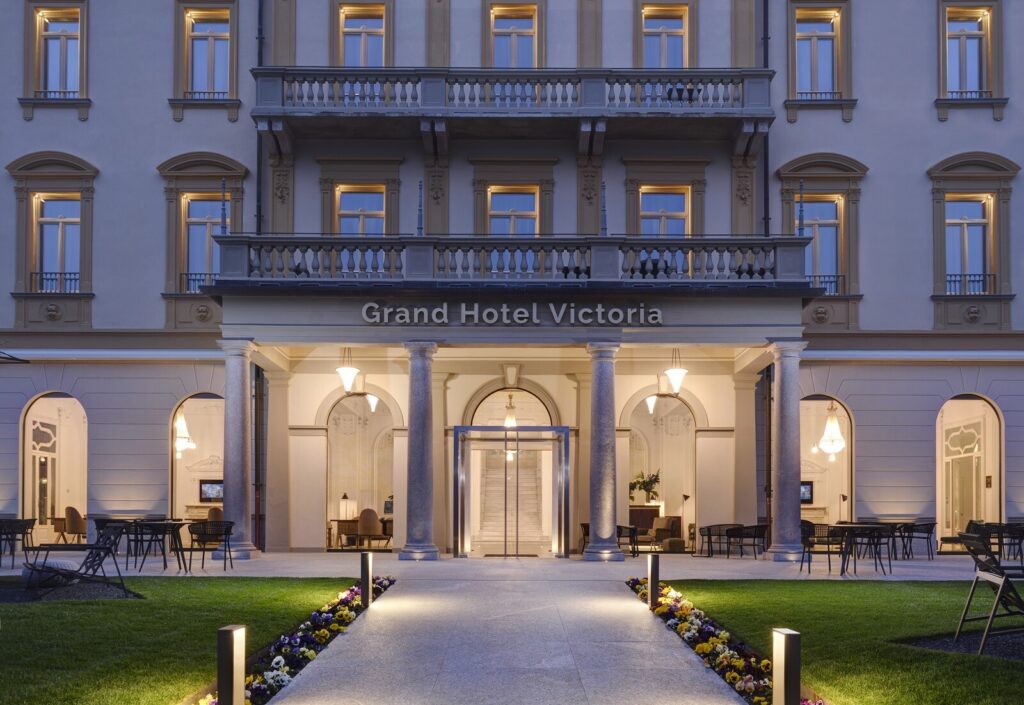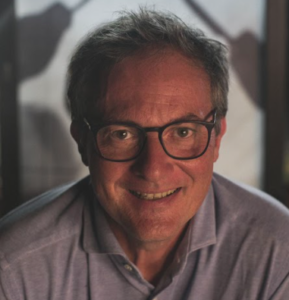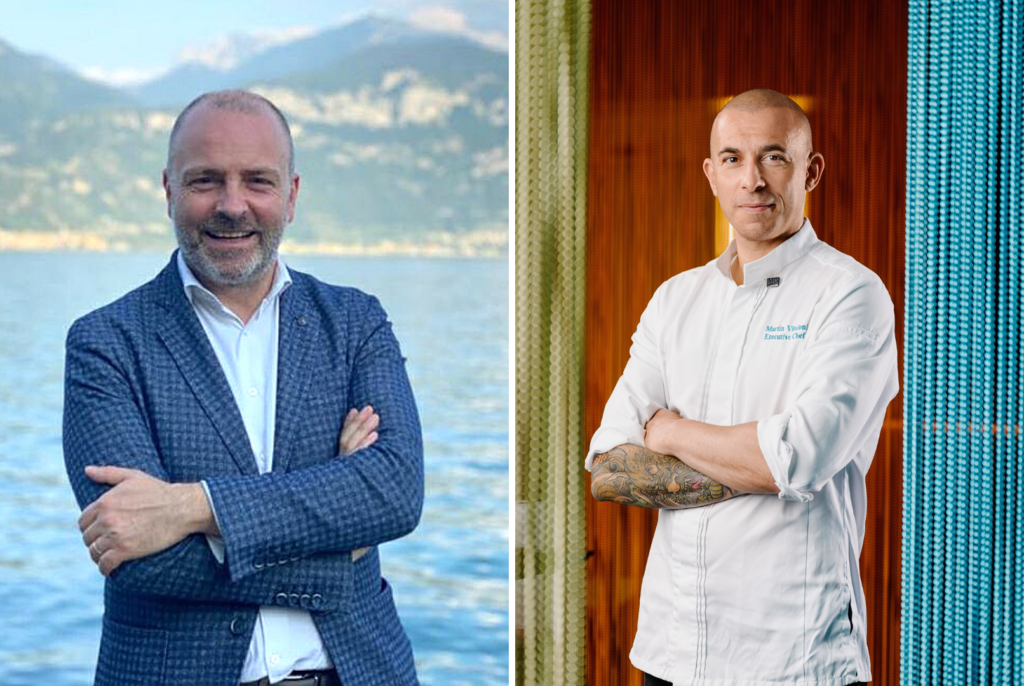The Menaggio Grand Hotel Victoria Concept & SPA by the Rocchi family’s R Collection Hotels is affiliated to the Small Luxury Hotels of The World Group and is a truly fascinating place. Since the Belle Époque, important families of all nationalities have stayed here when descending from the Engadin to spend a lakeside holiday in this magnificent Art Deco hotel. Imposing ceilings, stuccos and large windows combine with modern, avant-garde solutions that do not neglect a territorial touch and some inspiration from Alessandro Manzoni’s famous novel, ‘The Betrothed’. The 34 rooms in the original building ‘La Villa’ are augmented by the 47 rooms in ‘Il Palazzo’, all with an outstanding view of the lake or the surrounding mountains.

Marco Montagnani has been the hotel’s director since 2019: a man with long experience in the trade, he explains that it is essential to work on details and exclusivity to ensure that a luxury hotel is just that. From the quality of sleep to the courtesy sets guests find in their rooms, every small detail must be considered so that nothing is left to chance. Of course, the food service is also a strategic aspect: “Nowadays this is a service of importance on a par with the rooms, so food service must be designed starting with the areas dedicated to guests. What we are doing here, which distinguishes us from the other structures on Lake Como, is to think outside the box, inviting potential clientele from outside to enjoy the areas of the hotel, a common practice in other countries. We are 35 minutes from Lugano, Valtellina is one hour away, and St Moritz is just about a hundred kilometres from here”. For this reason, we have chosen our kitchen very carefully and chef Martin Vitaloni, who arrived when the project was already under way, relates: “The project was advancing well and with the drawings to hand the director and I made some adjustments, imagining the ideal flows and positions for machinery and equipment. Some areas already planned were optimised, for example we extended the bakery area, where we produce all leavened items for ourselves and for the Erre Restaurant of the Menaggio Golf Club, one of our ‘satellites’, and we adapted the layout of the garde-manger for cleaning meat and large fish”. Vitaloni continues: “In the past I had the chance to plan other kitchens and what’s important is not to repeat previous errors, because the project may seem perfect on paper, but when you get down to work you realise that certain things could have been planned better. With regard to this, I have to say that working with GICO’s staff was a great help, as they knew how to interpret our needs and come up with answers”.
Vitaloni has considerable experience: born in 1979, he started his career in traditional restaurants in the areas of Lodi and Pavia. His turning point coincided with the opening of Bulgari in Milan, with Elio Sironi: “an important investment in learning, when I was only 25 years old”. After that, Chateau Monfort, a Relais et Chateaux structure where he worked with director Montagnani; this is the place where the owner coined a definition for his cuisine, calling it “endorphic”. And then with Antonio Guida at La Seta in the Milan Mandarin Oriental, followed by a rapid experience at the Clandestino with Moreno Cedroni. He then went on to the opening of the Milan Botanical Club and a period in New York. In the end, Vitaloni is a cook with five openings to his credit and his cuisine is based on modern interpretations of classics: “not just in terms of presentation on the plate, though, because I love working with ingredients using different methods that range from different cooking modes to fermentation. I like asking guests to describe their favourite dishes and ingredients and then using the information to create ‘endorphic’ menus and customised dishes. That’s why kitchen planning is fundamental. Here at the Grand Hotel Victoria, all cooking operations are performed in the same place, from room service to the gourmet restaurant: “For the moment I have divided the cooking range”. The chef says of himself: “The way I see it is that harmony must reign supreme in the kitchen. Every chef has had at least one experience in a kitchen where people shout at each other all day long. For the way I work, it is important to be surrounded by intelligent people, because when each step has been established everything must run smoothly, without whipping people up. From the structural point of view, the layout must be absolutely logical. To achieve this, it is essential to include an expert in the field in the planning of a kitchen, which must be functional.

If used intelligently, technology can help to optimise the production process, thereby reducing the cook’s hours of work, but also from the gastronomical point of view it is extremely useful for achieving better results. Certain preparations have to be done in the old-fashioned way, for example blanching in boiling water is still the best way to prepare green vegetables. We should also question clichés and not take sides to follow some ideology: many cooks adopt automatic rituals in the kitchen, although actually they serve no useful purpose.” When asked how he faces emergencies in the kitchen, the chef’s answer is pragmatic: “if something breaks you try to find an alternative that will achieve the same quality, otherwise you propose something else.” All the solutions that assist versatility are important, such as the electric vaporfire: “at the moment I use it for maintaining things, in some cases it’s useful for keeping sauces at the right temperature, but I’ll find other uses for it as time goes on.” On the other hand, I use the frytop for many preparations; English muffins for breakfast, eggs, and for maintaining pans and risottos after boiling on the induction stove, which has a more rapid and aggressive impact: “we move them there because cooking is more gentle and heat is transmitted more gradually. In the case of the solid top, I don’t use it for direct cooking, but to keep pans and casseroles hot and for finishing off dishes that undergo long cooking. I use fryers not only for traditional fried food, but also for special preparations that require a lower temperature, for example American red potatoes, for which the temperature must not exceed 110/120 °C. In conclusion, I would say that I’m very happy to be working with GICO.

Food Writer and critic

Fill in your data: one of our Consultant will contact you soon to analyze your request and need and to develop together the project of your kitchen.
If you can’t find something in our website, please contact us, we will be pleased to satisfy your requests.